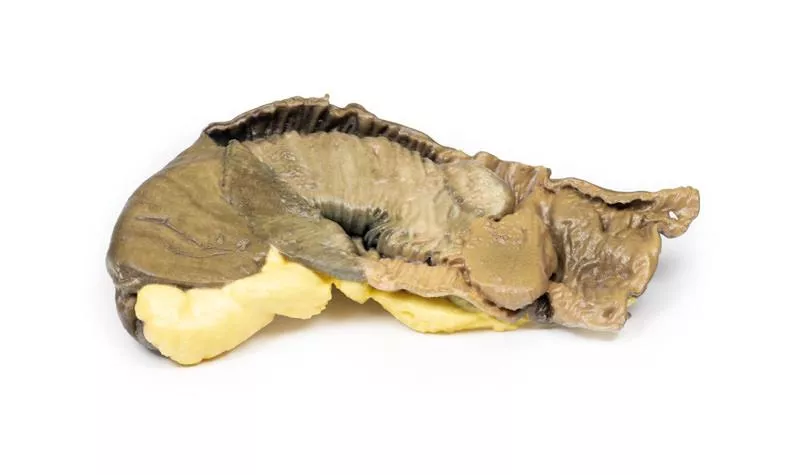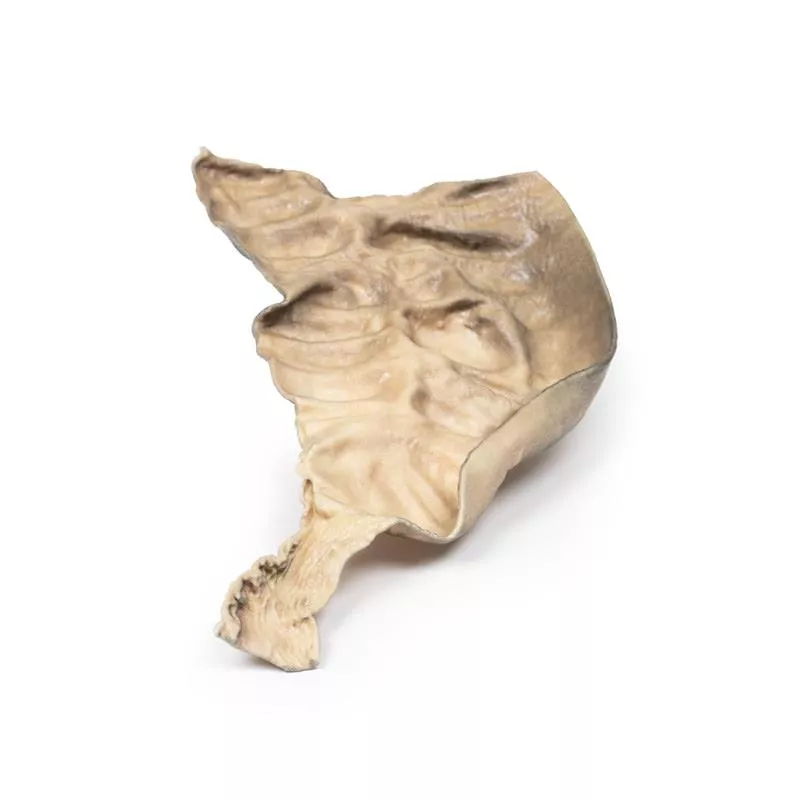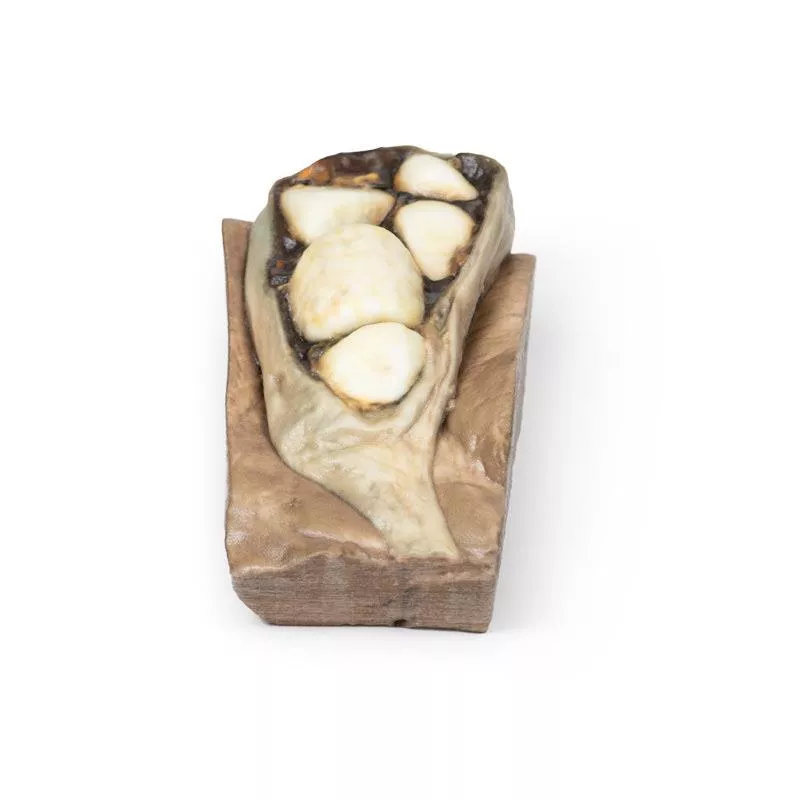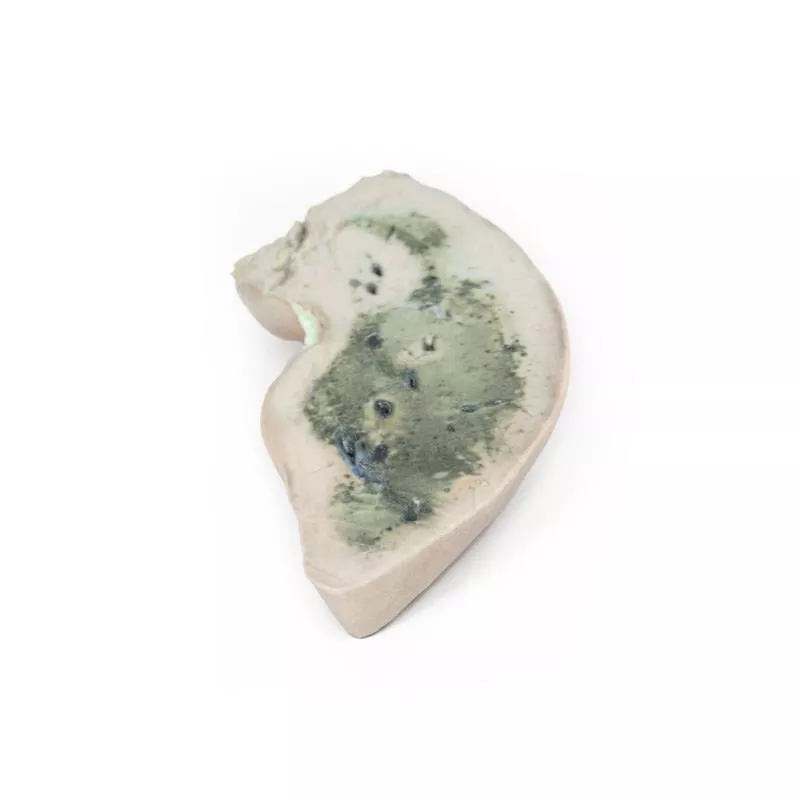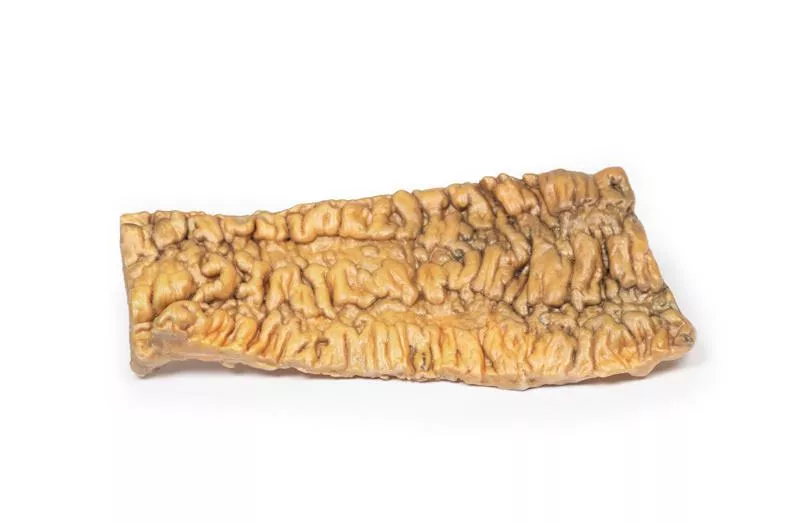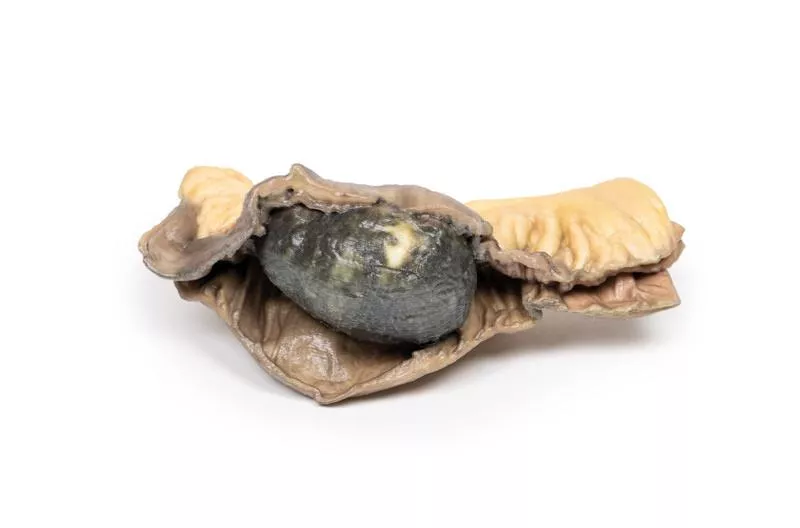Product information "Intussusception of small bowel due to metastatic tumour"
Clinical History
A 66-year-old woman presented with sudden, severe, colicky central abdominal pain, which was somewhat relieved by drawing up her knees. She passed a stool described as containing mucus and blood ("like redcurrant jelly"). On examination, a mass in the left hypochondrium was noted, which hardened during spasms. A laparotomy was performed and the specimen resected.
Pathology
The specimen is a 20?cm segment of small bowel with mesentery. A 3?cm polypoid tumour near the proximal margin has invaginated into the bowel lumen, forming a 13?cm long intussusception. The tumour lies at the apex of the invagination. The congested and exudative mucosa suggests early ischaemic necrosis. Although histology is not recorded, the macroscopic features are consistent with a metastatic malignant tumour.
Further Information
Intussusception is most common in children, often due to enlarged Peyer’s patches in the distal ileum. In adults, it is rare (1–5?% of bowel obstructions) and typically caused by a polypoid tumour acting as a lead point, dragged forward by peristalsis. Symptoms include intermittent obstruction or severe pain. Abdominal CT often shows the characteristic “target sign”.
A 66-year-old woman presented with sudden, severe, colicky central abdominal pain, which was somewhat relieved by drawing up her knees. She passed a stool described as containing mucus and blood ("like redcurrant jelly"). On examination, a mass in the left hypochondrium was noted, which hardened during spasms. A laparotomy was performed and the specimen resected.
Pathology
The specimen is a 20?cm segment of small bowel with mesentery. A 3?cm polypoid tumour near the proximal margin has invaginated into the bowel lumen, forming a 13?cm long intussusception. The tumour lies at the apex of the invagination. The congested and exudative mucosa suggests early ischaemic necrosis. Although histology is not recorded, the macroscopic features are consistent with a metastatic malignant tumour.
Further Information
Intussusception is most common in children, often due to enlarged Peyer’s patches in the distal ileum. In adults, it is rare (1–5?% of bowel obstructions) and typically caused by a polypoid tumour acting as a lead point, dragged forward by peristalsis. Symptoms include intermittent obstruction or severe pain. Abdominal CT often shows the characteristic “target sign”.
Erler-Zimmer
Erler-Zimmer GmbH & Co.KG
Hauptstrasse 27
77886 Lauf
Germany
info@erler-zimmer.de
Achtung! Medizinisches Ausbildungsmaterial, kein Spielzeug. Nicht geeignet für Personen unter 14 Jahren.
Attention! Medical training material, not a toy. Not suitable for persons under 14 years of age.



















